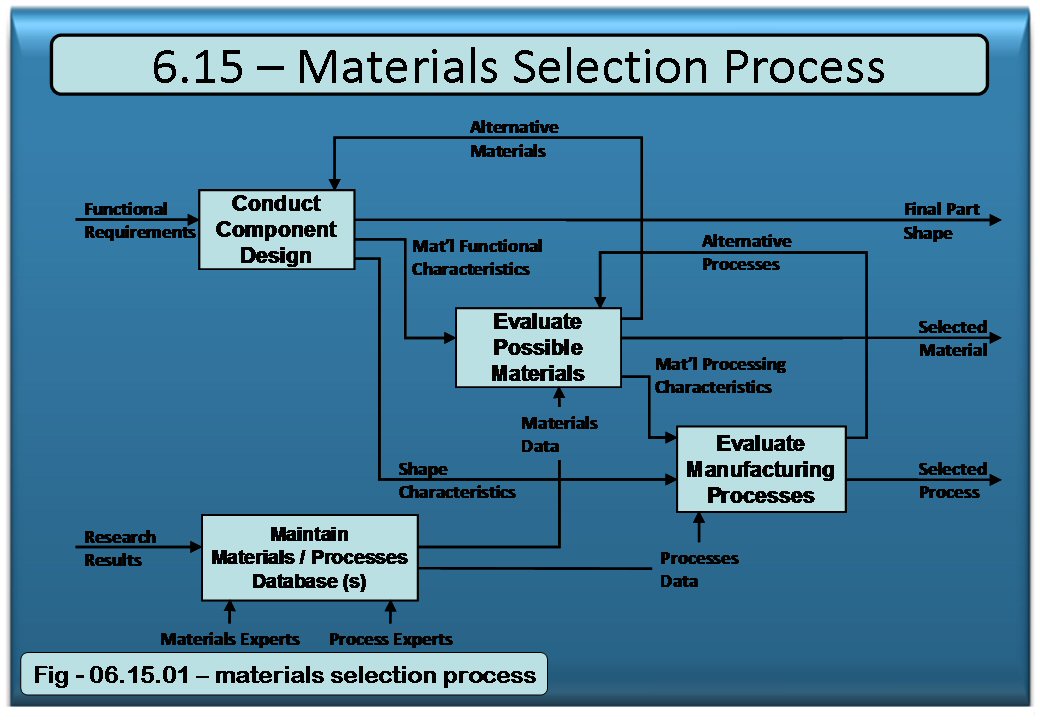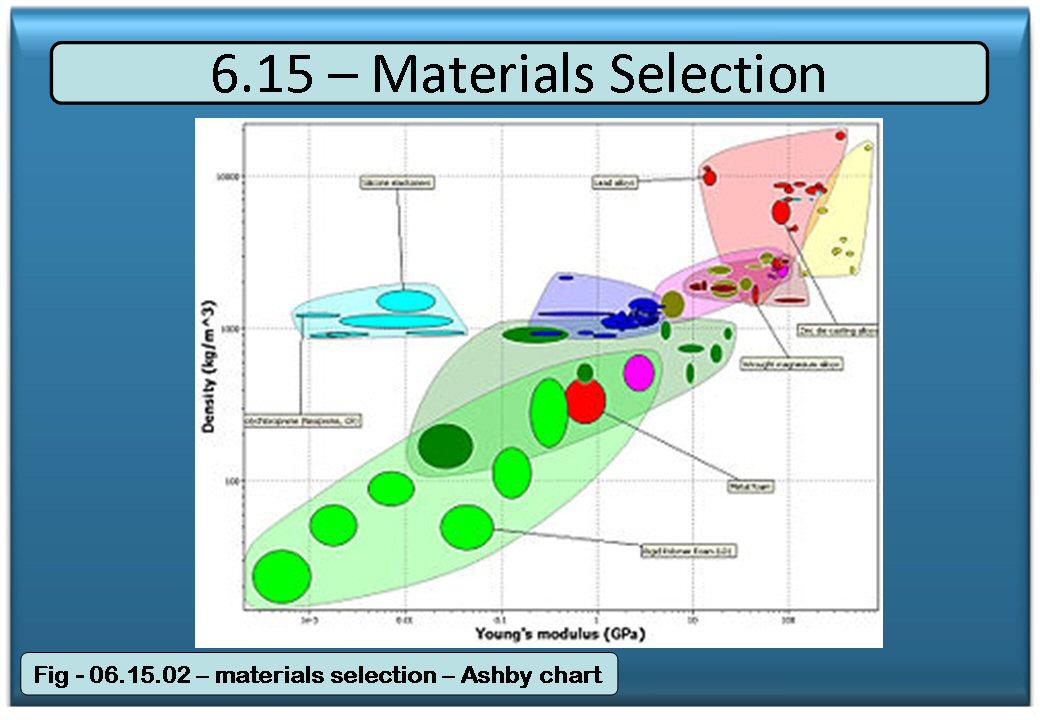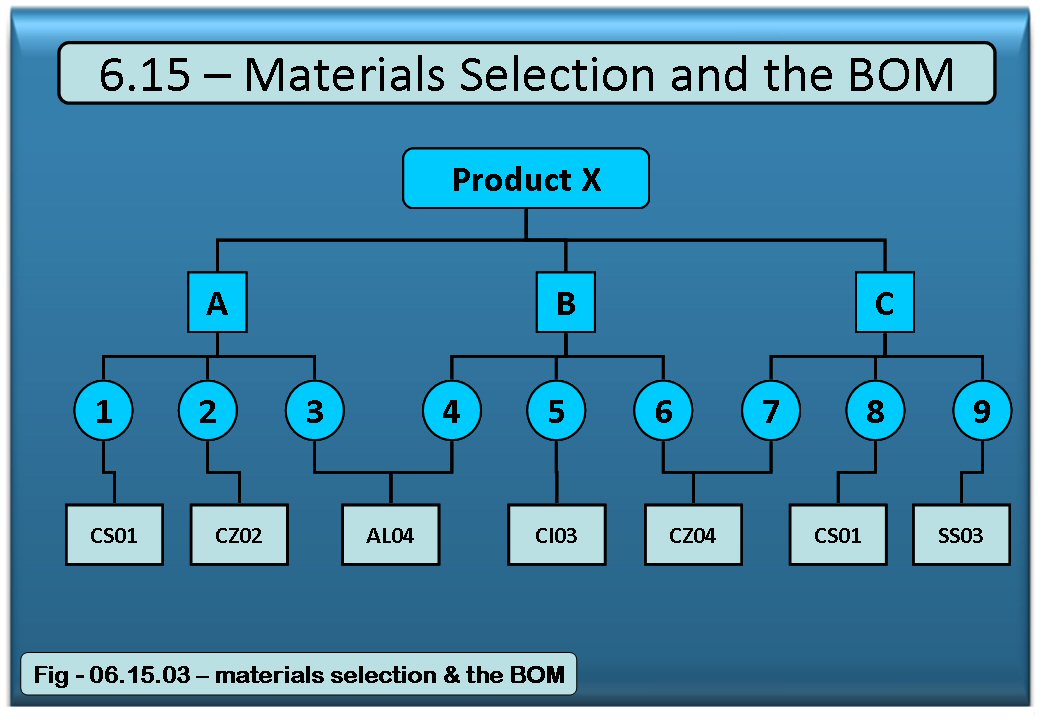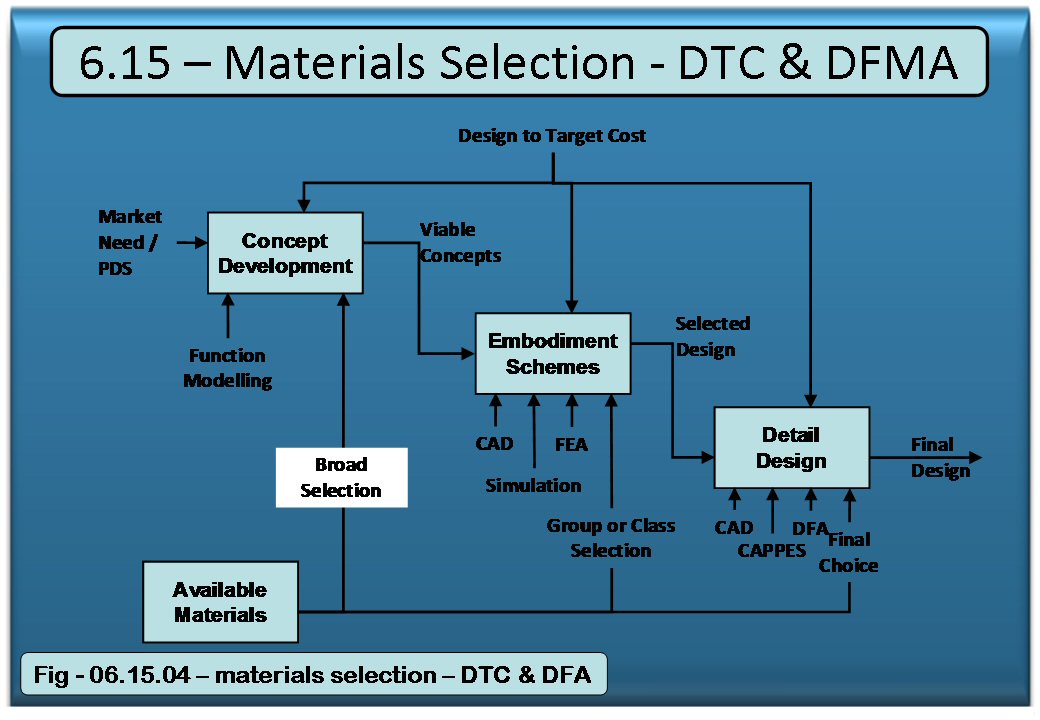6.15 - Materials Selection
Material Selection is a crucial step in the Product Design process. The materials selected to fulfil a required product performance characteristic drives manufacturing process costs and consequently product costs. The scale of the task in selecting an appropriate material grows daily as researchers add more new materials to the already huge choices available. There are somewhere in excess of 40,000 metallic substances to select from. If we broaden the range to non-metals we have a total choice in excess of 100,000 materials. Once a material has been selected the processing choices are limited to only those applicable to that material. For the cost conscious the viable options diminish even more. Engineers rarely get the opportunity to send men in rockets to the moon with a 10 year time constraint and no cost constraints. Mostly they have challenging Target Costs and significant time constraints.
Given that processing may also change the functional characteristics of a material (e.g. forging versus machining) the engineer must consider materials, processing and desired performance in a simultaneous iterative process as shown below:-

Material characteristics offer a very wide range of possible solutions to design problems. Using materials in various combinations allows the designer a virtually limitless field of creative opportunities to satisfy customer demands. Just a brief look at broad characteristics shows what scope there is.
Broad Characteristics of the major materials groups |
Metals |
Polymers |
Ceramics |
Strong |
Weak |
Strong |
Stiff |
Compliant |
Stiff |
Tough |
Durable |
Brittle |
Electrically Conductive |
Insulating |
Insulating |
High thermal Conductivity |
Sensitive |
Low thermal conductivity |
Adapted from “Engineering Design: A Materials and Processing Approach”
- see ref. 017 |
Material Selection Process
Clearly material selection is not a trivial process. The impediments to getting it right are:-
- Lack of broad knowledge of various materials
- Materials Data Accuracy Problems
- A lack of clear goals (e.g. no Product Design Specification [PDS] see guide
6.23)
- The design engineer is called upon to specify or select materials under two main conditions:-
- For new parts or components in combination with other new parts.
- Materials to replace existing parts or components where the current performance is inadequate.
- In either case the designer must follow a problem solving process such as:-
- Determine the material requirements
- Screen Possible candidate materials
- Selection of a range of possible candidate materials
- Develop design solution(s) based on the confirmed capabilities of the materials.
To do this manually requires many hours of research. Therefore a computer based approach is called for. This can be as simple as using a database or spreadsheet tables similar to this one below:-
Table 1 – Bar Stock |
|
|
Item |
Material |
Cost/kg |
Cost/m3 |
1.01 |
Mild Steel (Black Bar) |
1.00 |
10.00 |
1.02 |
Mild Steel (Bright Bar) |
1.25 |
12.90 |
1.03 |
Case Hardened Steel |
1.38 |
14.30 |
1.04 |
Cast Iron |
2.75 |
18.60 |
1.05 |
Carbon Steel |
2.25 |
21.40 |
1.06 |
Manganese Steel |
2.50 |
24.30 |
1.07 |
Aluminium |
8.50 |
35.70 |
1.08 |
Nickel-Chrome Steel |
4.63 |
42.90 |
1.09 |
Brass |
6.63 |
72.90 |
1.10 |
Stainless Steel |
9.63 |
102.10 |
1.11 |
Phosphor Bronze |
16.00 |
124.30 |
1.12 |
Gun Metal |
17.88 |
140.00 |
The above table plots the relative cost of materials using mass and volume. Other charts and tables could be used to plot any material characteristic against another depending on the problem needing to be solved. Alternatively we can use more sophisticated approaches that present properties in a graphical form like an “Ashby Chart” below showing density against Young’s Modulus:-

Whatever approach is taken it can speed the process of arriving at candidate materials for the engineer to make his final selection weighing all the relevant factors in the process.
Material Selection in the Product Design Process
Material selection takes place at component level in the Product Structure.

As the design team iterates the design the actual material, shape and processing requirements of the components remain in a state of flux until the team decide enough has been done to satisfy the Product Design Specification and the target cost. It is then “frozen”, approved and released for manufacture.
The design team use tools that enable them to make many trade-offs to arrive at the final selection.

Many CAD and FEA systems have materials databases that can be adapted, populated or developed for this purpose.
Some standalone systems are available to do this in reverse – they provide the data and selection methodology and the data is made available to design and design analysis tools.
Material comparison charts and tables make useful reference data as input to Value Analysis or Value Engineering studies or projects. See guide 6.22.